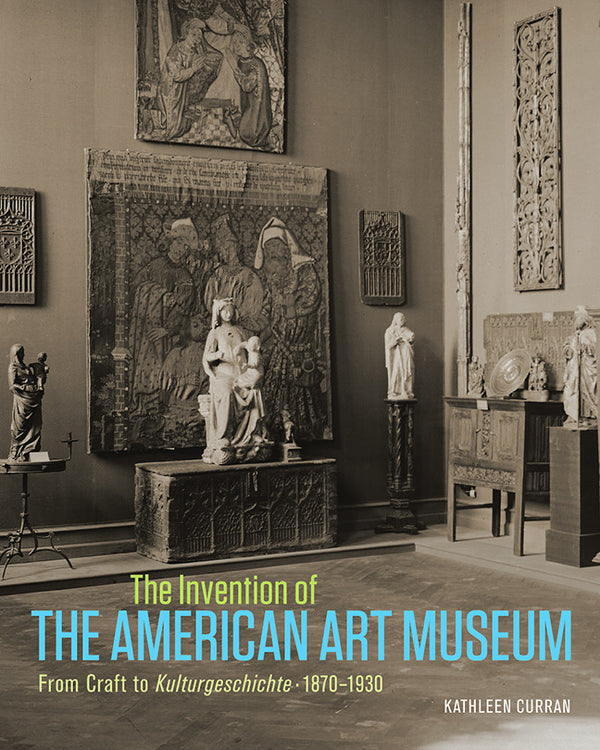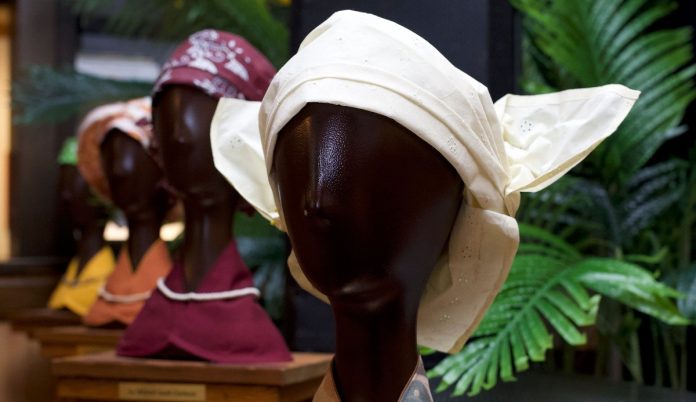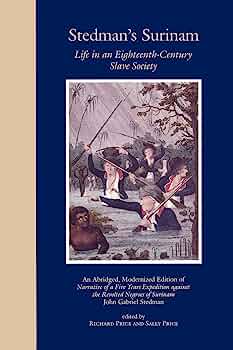Have you ever wondered what it would be like to step back in time and explore the rich history of Suriname? Well, get ready to embark on a fascinating journey through the Surinamese Museum, where you’ll find yourself immersed in the captivating stories and artifacts that bring the country’s past to life. In this article, we’ll dive deep into the intriguing Surinamese Museum, uncovering its hidden treasures and delving into the historical significance of each exhibit.
Upon entering the Surinamese Museum, you’ll be greeted by a myriad of exhibits that showcase the diverse and complex history of Suriname. From the moment you step through the door, you’ll feel a sense of awe and curiosity as you’re transported to a different era. Each artifact and display tells a unique story, whether it’s the ancient pottery of the indigenous peoples, the colonial relics from the Dutch colonization period, or the symbolic art of Suriname’s Maroon communities. As you wander through the museum, you’ll have the opportunity to learn about the struggles and triumphs of Suriname’s past, gaining a deeper understanding of the country’s cultural heritage.
So, if you’re fascinated by history and yearning for a glimpse into Suriname’s vibrant past, the Surinamese Museum is a must-visit destination. In our upcoming article, we’ll guide you through the different sections of the museum, highlighting some of the most captivating exhibits and shedding light on the significance of each. Get ready to embark on a captivating journey through time as we delve into the enigmatic Surinamese Museum and discover the rich tapestry of Suriname’s history.

Introduction to the Surinamese Museum
Located in the heart of Paramaribo, the capital city of Suriname, the Surinamese Museum stands tall as a repository of the nation’s rich and diverse history. This impressive institution allows visitors to embark on a captivating journey through time, exploring the country’s colonization by the Dutch, the impact of the slave trade, and its journey towards independence. With its purpose of preserving Surinamese heritage, educating visitors about history, and promoting cultural understanding, the Surinamese Museum holds great significance for both locals and tourists alike.
Exhibits at the Surinamese Museum
The Surinamese Museum boasts an extensive collection of artifacts and exhibits that shed light on various aspects of the country’s past. From pre-colonial artifacts to the African heritage section, each showcase contributes to an immersive experience that paints a comprehensive picture of Suriname’s intriguing history.
Pre-Colonial Artifacts
In the pre-colonial artifacts section, visitors can marvel at the indigenous tools and artwork that represent the vibrant cultures that thrived on this land long before European arrival. Intricately carved wooden sculptures, pottery, and traditional ceremonial objects offer a glimpse into the customs, traditions, and artistic expression of Suriname’s indigenous populations.
Colonial Period Artefacts
Moving forward in history, the museum takes visitors deep into the colonial period, when the Dutch arrived in Suriname. Dutch trading goods, such as beads, textiles, and small tools, reveal the intercultural exchange that occurred between the Europeans and the local inhabitants. Additionally, visitors can step into the reconstructed interiors of a plantation, gaining insights into the living conditions and furnishings of the Dutch plantation owners and the enslaved people who toiled on the land.
Indigenous Culture Showcase
A testament to Suriname’s diversity, the indigenous culture showcase highlights the customs, traditions, and unique ways of life of various indigenous communities. Colorful traditional clothing adorned with intricate beadwork, jewelry made from natural materials, and displays of spiritual practices offer a deeper understanding of the rich cultural identity that remains an integral part of contemporary Suriname.
African Heritage Section
The African heritage section pays homage to the African Surinamese community, exploring the roots of their ancestors who were forcibly brought to Suriname as slaves. Through vibrant displays of music, dance, and spiritual practices, visitors gain a deeper appreciation for the resilience, creativity, and enduring cultural legacy of African Surinamese people. This section sheds light on the turbulent history of slavery in Suriname, while also celebrating the contributions and influence of African traditions on Surinamese society.
Surinamese Independence Display
The Surinamese Museum culminates its historical journey with a dedicated exhibit that chronicles the nation’s path to independence. Visitors can explore key events, significant figures, and the impact of independence on Surinamese national identity. This section allows visitors to reflect on the struggles and triumphs of the Surinamese people as they established their own self-governance and sovereignty.

Colonization by the Dutch
To truly understand Suriname’s history, one must delve into the period of colonization by the Dutch, which plays a pivotal role in shaping the country’s heritage. The arrival of the Dutch in Suriname marked the beginning of a tumultuous era that would shape the socio-economic landscape of the region.
Arrival of the Dutch in Suriname
The Dutch first arrived in Suriname in the early 17th century, seeking to establish a profitable colony in South America. Attracted by the abundance of fertile land and natural resources, the Dutch West India Company set its sights on Suriname as a potential new source of wealth.
Establishment of Plantations
In their pursuit of economic prosperity, the Dutch established large-scale plantations in Suriname. These plantations primarily focused on the cultivation of cash crops such as sugar, coffee, and cocoa. The demand for these commodities in Europe drove the rapid expansion of the plantation economy, subsequently leading to an increasing reliance on enslaved labor.
Economic Exploitation and Slavery
The Dutch plantation owners capitalized on the slave trade, importing enslaved Africans to work on the plantations under gruesome conditions. Enslaved individuals endured backbreaking labor, harsh punishments, and the denial of basic human rights. The museum vividly portrays the brutal reality of plantation life, shedding light on the resilience and resistance of the enslaved people who fought for their freedom.
Impact of the Slave Trade
The slave trade had a profound and lasting impact on Suriname, shaping its demographics, culture, and social structure. The triangular trade route, life on plantations, and the eventual abolition of slavery are all essential chapters of Suriname’s history that deserve exploration.
Triangular Trade Route
Suriname, like many other colonial territories, was an integral part of the triangular trade route. Raw materials such as sugar and coffee from Surinamese plantations were transported to Europe, where they were manufactured into finished goods. These products were then traded for enslaved Africans, who were forcibly transported to Suriname to work on the plantations, thus perpetuating the cycle of exploitation.
Life on Plantations
The Surinamese Museum offers visitors a glimpse into the daily life of enslaved people on the plantations. Exhibits portray the living conditions, working conditions, and the various roles and responsibilities assigned to enslaved individuals. These displays serve as a stark reminder of the inhumanity of slavery while honoring the strength and resilience of those who endured such hardships.
Abolition of Slavery and Transition
The eventual abolition of slavery in Suriname further sculpted the nation’s history. The museum delves into the transition from slavery to freedom, showcasing the efforts of enslaved individuals and abolitionists in the fight for emancipation. Visitors can trace the steps taken by Suriname towards a more inclusive society, navigating through the challenges and achievements that marked this transformative period.

Independence and Post-Colonial Era
With its independence from the Netherlands in 1975, Suriname entered a new era, forging its own path towards self-governance and national identity. The Surinamese Museum explores this significant chapter in the nation’s history, spotlighting the transition from colonial rule to an independent nation.
Transition to Self-Governance
Suriname’s transition to self-governance was not without its challenges. The museum highlights the political and social developments that shaped the early years of independence, including the establishment of a democratic system and the formation of political parties. Exploring this section allows visitors to gain insights into the complexities of nation-building and the hurdles faced by Suriname as it navigated through the post-colonial era.
Political and Social Developments
Beyond the initial years of independence, the museum delves into subsequent political and social developments that have shaped contemporary Suriname. From the ups and downs of democratic governance to the diverse cultural landscape, visitors gain a comprehensive understanding of Suriname’s journey towards stability, progress, and diversity.
Cultural Identity and Diversity
One of Suriname’s most remarkable features is its cultural diversity. Surinamese people hail from a range of ethnic backgrounds, including African, Indian, Indonesian, Chinese, and Indigenous heritage, among others. The Surinamese Museum showcases the intricate tapestry of cultures that form the fabric of Surinamese society, emphasizing the importance of cultural preservation, respect, and unity in a diverse nation.
Purpose and Significance
The Surinamese Museum stands as a crucial institution in preserving the history and heritage of Suriname. Its purpose and significance extend beyond mere collection and display of artifacts.
Preserving Surinamese Heritage
By meticulously curating and conserving artifacts, the Surinamese Museum ensures that the nation’s heritage is safeguarded for future generations. These artifacts bridge the gap between the past and the present, enabling visitors to connect with their roots and the historical forces that have shaped Suriname into what it is today.
Educating Visitors about History
The Surinamese Museum plays a vital role in educating visitors about the complex and often overlooked history of Suriname. Through immersive exhibits and informative displays, visitors gain a deeper understanding of the experiences, struggles, and triumphs of Surinamese people throughout the centuries. This knowledge fosters empathy, appreciation, and a more comprehensive understanding of the country’s multicultural identity.
Promoting Cultural Understanding
As Suriname continues to embrace its diversity, the Surinamese Museum plays a pivotal role in promoting cultural understanding and respect. By showcasing the various cultures that coexist within the nation, the museum encourages dialogue, appreciation, and the celebration of differences. It serves as a symbol of unity, where Surinamese people from all walks of life can come together, acknowledging the shared heritage that binds them.

Location and Architecture
Situated in the historic city of Paramaribo, a UNESCO World Heritage site, the Surinamese Museum is housed in a building that is itself steeped in history. The location and architecture of the museum further contribute to its charm and allure.
Historical Building in Paramaribo
The museum’s location in Paramaribo allows visitors to immerse themselves in the captivating atmosphere of Suriname’s capital city. This bustling urban center boasts a mix of colonial-era and modern architecture, reflecting the nation’s rich history and vibrant present. Its designation as a UNESCO World Heritage site further emphasizes the cultural and historical significance of the area.
Museum Layout and Design
The Surinamese Museum’s architecture seamlessly blends with its surroundings, incorporating elements of traditional Surinamese and Dutch colonial design. The layout of the museum is thoughtfully designed, taking visitors on a chronological journey through Suriname’s history. From the informative displays to interactive exhibits, every aspect of the museum’s design is carefully crafted to enhance the visitor experience and facilitate an immersive exploration of Surinamese history.
Interactive Exhibits and Technologies
To engage visitors and create an enriching experience, the Surinamese Museum employs interactive exhibits and cutting-edge technologies. Visitors can listen to oral histories, watch multimedia presentations, and participate in hands-on activities that bring history alive. These interactive elements appeal to visitors of all ages, making the museum a vibrant and engaging destination for learning and discovery.
Pre-Colonial Artifacts
The Surinamese Museum takes pride in its collection of pre-colonial artifacts, offering visitors a glimpse into the richness and diversity of Suriname’s indigenous cultures.
Indigenous Tools and Artwork
The pre-colonial artifacts showcase a range of indigenous tools that were used for hunting, fishing, and various daily tasks. Intricately designed wooden sculptures display the craftsmanship and artistic expression of Suriname’s indigenous peoples. Each artifact tells a story, enabling visitors to appreciate the ingenuity and resourcefulness of these communities.
Traditional Ceremonial Objects
Ceremonial objects provide insight into the spiritual practices and rituals that were an integral part of indigenous cultures. Visitors can marvel at colorful masks, ornate headdresses, and traditional musical instruments used in sacred ceremonies and cultural celebrations. These artifacts serve as a reminder of the deep connection that Suriname’s indigenous communities have with their ancestral traditions.

Colonial Period Artefacts
The colonial period in Suriname’s history left an indelible mark on the nation’s cultural landscape. The Surinamese Museum showcases a diverse range of colonial period artifacts that provide glimpses into the intermingling of cultures and the impact of Dutch colonization.
Dutch Trading Goods
Dutch trading goods, such as beads, textiles, and small tools, speak to the intercultural exchange that occurred during the colonial period. These artifacts highlight the commercial dimensions of Dutch colonization and the impact it had on local communities. They also reveal the fusion of European and indigenous artistic styles that emerged as a result of this exchange.
Plantation Interiors and Furnishings
Reconstructed plantation interiors give visitors a sense of the living conditions during the colonial era. From the grandeur of the plantation owner’s residence to the modest quarters of enslaved individuals, the exhibits provide a tangible connection to the past. The carefully curated furnishings underscore the stark contrasts between the lives of the plantation owners and those who were enslaved, encouraging visitors to reflect upon the inequalities and injustices of the time.
Indigenous Culture Showcase
Suriname’s indigenous cultures are a fundamental part of the nation’s identity, and the Surinamese Museum pays homage to their traditions, customs, and ways of life.
Customs and Traditions
The indigenous culture showcase offers visitors a deeper understanding of the customs and traditions that have been preserved by Suriname’s indigenous communities. Visitors can learn about time-honored practices such as use of medicinal plants, storytelling, and communal farming techniques. This section of the museum serves as a testament to the resilience and cultural vibrancy of Suriname’s indigenous people.
Traditional Clothing and Jewelry
The elaborate traditional clothing and intricate jewelry worn by Suriname’s indigenous communities are a reflection of their rich cultural heritage. Visitors can admire the vibrant colors, intricate beadwork, and skillful craftsmanship of these garments and accessories. Each piece tells a story, signifying a connection to the land, ancestors, and spiritual beliefs of the indigenous communities.
African Heritage Section
The African heritage section of the Surinamese Museum delves into the roots of African Surinamese people, their music, dance, and spiritual practices.
Roots of African Surinamese
Suriname’s African Surinamese community carries the legacy of the transatlantic slave trade, and their cultural contributions have shaped the nation’s identity. This section of the museum explores the origins of African Surinamese, their resilience in the face of adversity, and their enduring cultural traditions. Visitors can gain a deeper understanding of the African diaspora in Suriname and the legacy it continues to leave on the nation’s cultural fabric.
Music, Dance, and Spiritual Practices
Music and dance have always served as powerful forms of expression for African Surinamese people. The museum showcases a variety of musical instruments, including drums and stringed instruments, and visitors can listen to recordings of traditional songs and rhythms. Additionally, exhibits on spiritual practices offer insights into African Surinamese religions and their ongoing significance in contemporary Surinamese society.
Surinamese Independence Display
Suriname’s journey to independence in 1975 marked a pivotal moment in the nation’s history. The Surinamese Museum commemorates this significant event with a dedicated exhibit that explores the key events and figures that shaped Suriname’s path to self-governance.
Key Events and Figures
The Surinamese Museum’s independence display offers visitors an overview of the events that led to Suriname’s independence from the Netherlands. It highlights the key figures who played instrumental roles in the nation’s struggle for autonomy, including political leaders and activists. Through photographs, documents, and memorabilia, visitors gain a glimpse into the challenges, aspirations, and victories that characterized this transformative period.
Impact on National Identity
Independence marked a defining moment in Surinamese history, shaping the nation’s identity and vision for the future. The independence display explores the impact of this milestone on Suriname’s cultural, social, and political landscape. Visitors can reflect on the ongoing efforts to build a cohesive national identity, understanding that the path to unity and progress is an ongoing process.
Conclusion
The Surinamese Museum stands as a testament to the richness and diversity of Suriname’s history and heritage. Through its exhibits, it preserves Suriname’s past, educates visitors about the complexities of its past, and promotes cultural understanding and appreciation. As you walk through the museum, you embark on a captivating journey that spans centuries, allowing you to witness the impacts of colonization, the resilience of enslaved individuals, the road to independence, and the celebration of Suriname’s cultural diversity. The Surinamese Museum is more than just a collection of artifacts; it is an immersive experience that invites you to explore, learn, and connect with Suriname’s intriguing past.